This umbilical cord-inspired charger cable by interactive media artist Mio I-zawa comes to life when connected to an iPhone.
+ Video
[See also: Mechanical tumor, external heart, elastic cell]
This umbilical cord-inspired charger cable by interactive media artist Mio I-zawa comes to life when connected to an iPhone.
+ Video
[See also: Mechanical tumor, external heart, elastic cell]
Call it the rumor that wouldn't die. For decades, people in Japan have alleged that Sony installs a secret timer in its products that causes them to fail after a specific period of time.

Speculation about the existence of this so-called "Sony timer" emerged in the 1980s and 1990s as consumers grew increasingly suspicious of Sony devices that stopped working just after the warranty expired. According to the theory, Sony's time-activated kill switches are designed to boost sales by driving consumers to purchase replacement parts, repairs, or new models (often the cheapest option) after a scheduled period.
Today, decades after the rumors began, people still talk about the Sony timer. In 2006, after a string of laptop explosions prompted a global recall of rechargeable lithium-ion batteries manufactured by Sony Energy Devices Corporation, Japanese Internet forums were flooded with sarcastic comments raving about how effective the latest generation of Sony timers had become.
Clearly, much of the speculation about hidden Sony timers is tongue-in-cheek, but some people appear to take the claims seriously, pointing to the suspiciously precise timing of product failures as evidence of foul play. Regardless of whether or not Sony timers actually exist, the company has been dogged by the perception that its products break down just outside warranty.
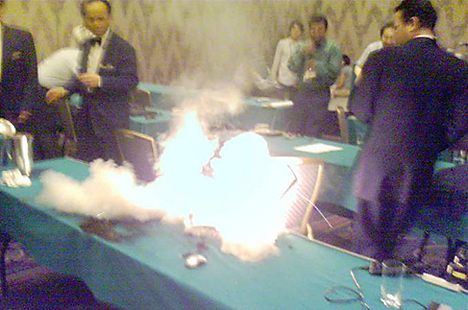
Although "Sony timer" has long been a household phrase in Japan, company officials have only rarely acknowledged the rumors in public. In June 2006, an executive who oversaw the establishment of the VAIO customer service center attracted attention when he mentioned the Sony timer in a speech at G-Force Japan, a large annual conference for the Japanese call center industry. "It's absurd to think that Sony would install timers that cause products to fail just 13 months after purchase," he told the audience. "But for some reason, people continue to have this perception. Our marketing, customer service and product development departments are making a deliberate and concerted effort to improve Sony's image," he said.
At a shareholders' meeting in June 2007, in a speech outlining new measures to ensure product quality and improve the Sony brand image, former company president (current vice-chairman) Ryoji Chubachi admitted he knew the phrase "Sony timer."

Despite the decades of rumors and speculation, nobody has ever proven the existence of the Sony timer. Skeptics argue that if such timers actually existed, a rival company would likely have found one and made it public. With this in mind, the Sony timer is widely considered an urban legend.
[Note: This is the second installment in a series of weekly posts about urban legends from Japan. Check back next week for another report.]
Hundreds of companies have gathered to showcase their latest technology at CEATEC Japan 2009, the largest consumer electronics trade show in Asia, which is being held at Makuhari Messe near Tokyo until October 10. Here are a few photos from the event.
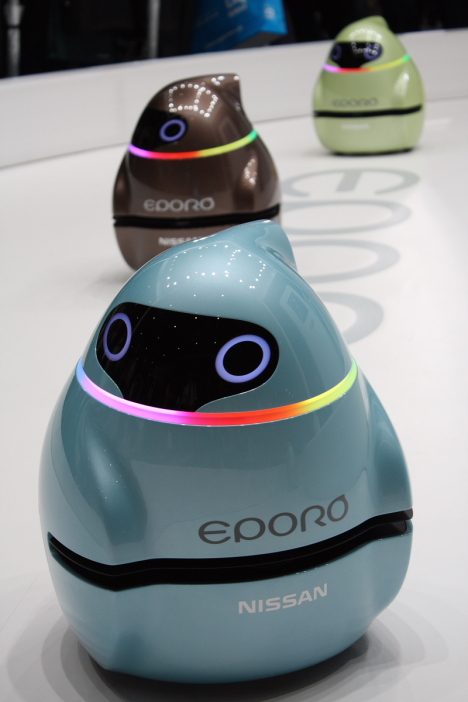
Nissan EPORO robots [+]
Nissan stole the show with their demonstration of the EPORO robot concept car, which travels in groups and is designed to avoid obstacles and collisions by mimicking the behavior of fish. [More]
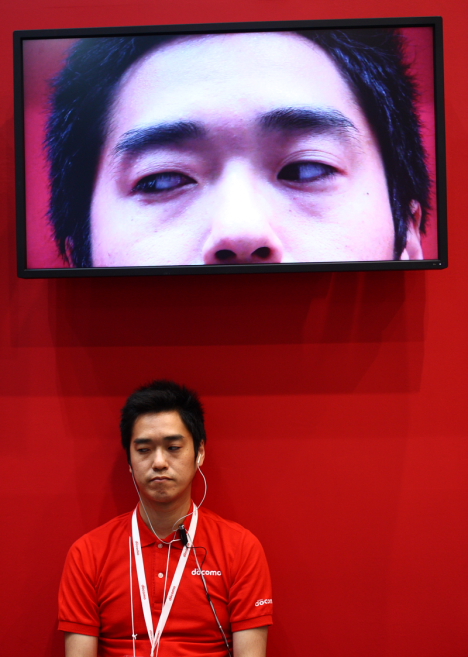
NTT DoCoMo's eye-controlled music player [+]
NTT DoCoMo showcased a set of earphones that enable the wearer to control a music player simply by shifting his or her eyes. Electrodes embedded in the earphones detect the subtle changes in eye movement.
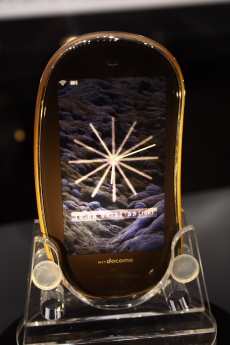
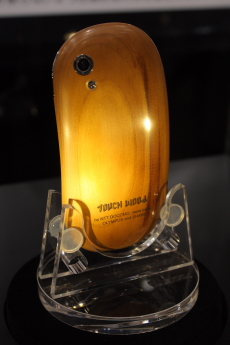
TOUCH WOOD: Front [+] // Back [+]
NTT DoCoMo's TOUCH WOOD prototype handset is made from the surplus wood of trees culled during forest-thinning operations. [More]
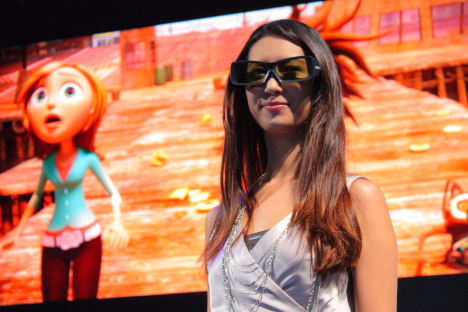
A model wears special glasses to promote Sony's 3D Full HDTV displays [+]
Sony's booth featured a variety of new 3D Full HDTV displays, and the accompanying presentation starred a pair of models wearing special 3D glasses.
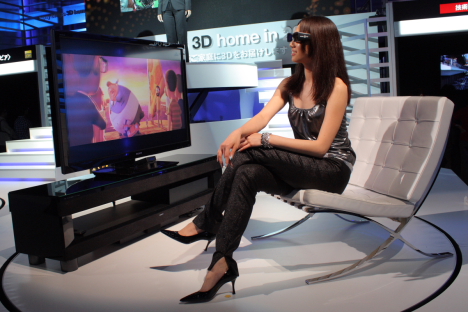
A model wears special glasses to promote Sony's 3D Full HDTV displays [+]
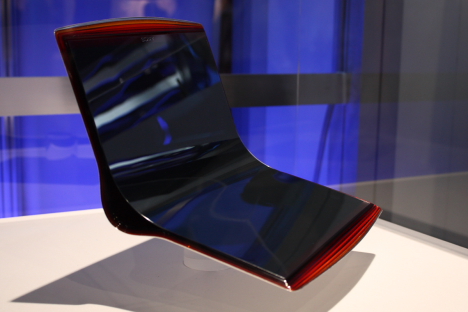
Vaio concept [+]
Sony also displayed a few concept items incorporating their flexible display technology, such as this future Vaio notebook.
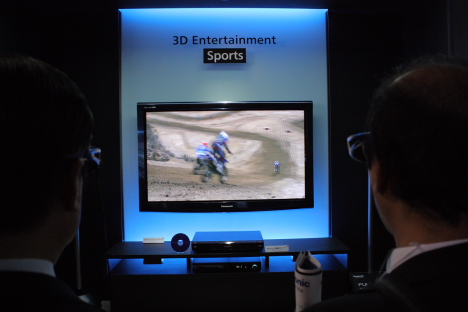
Panasonic 3D Full HDTV PDP [+]
Panasonic exhibited their latest 3D display technology, which includes 50" 3D Full HDTV plasma displays.
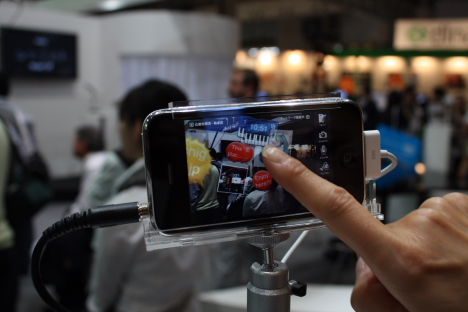
Sekai Camera [+]
Sekai Camera, an augmented reality social tagging application for the iPhone, was on display at the Yamaha booth. [More]
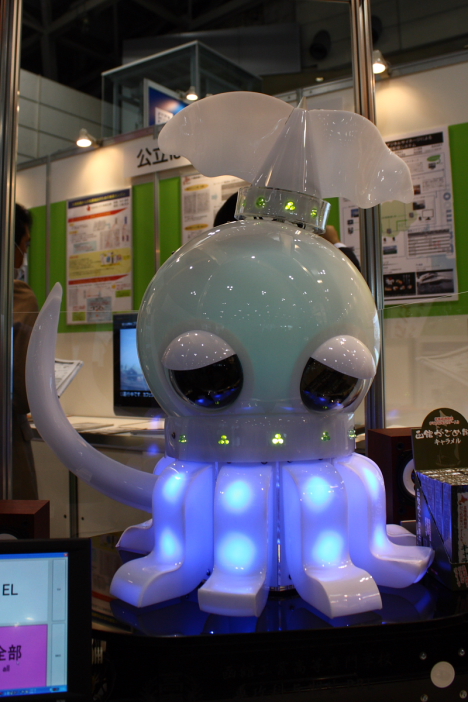
Squid robot 1 [+]
Representatives from Hakodate showcased a pair of squid robots designed to attract attention to their area. The robots are part of an unorthodox campaign that includes some entertaining tourism promotion videos. [More]
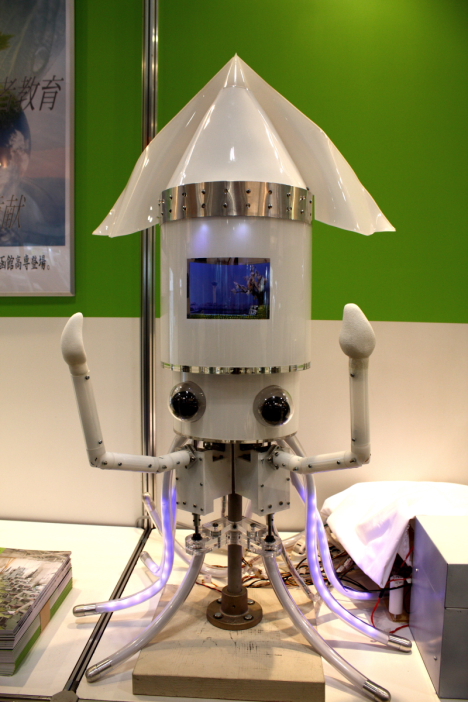
Squid robot 2 [+]
Fujitsu exhibited a selection of interesting concept phones submitted by participants in the mobile phone design competition.
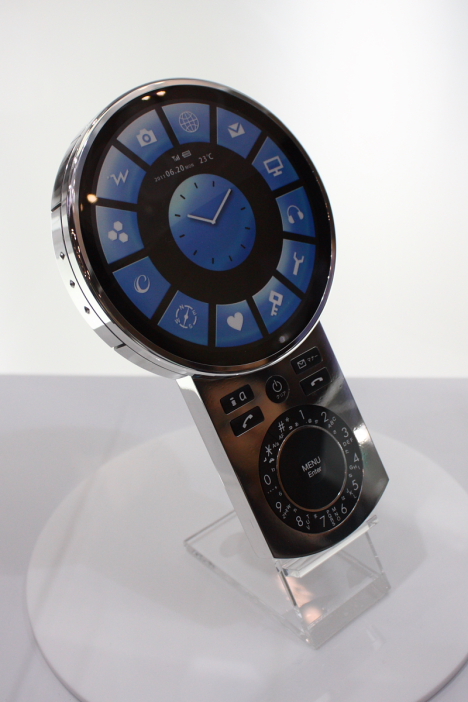
F-Circle: Fujitsu concept phone [+]
The F-Circle phone, designed by Yuji Ito, has a "timeless" appearance that departs from the typical rectangular mobile shape.
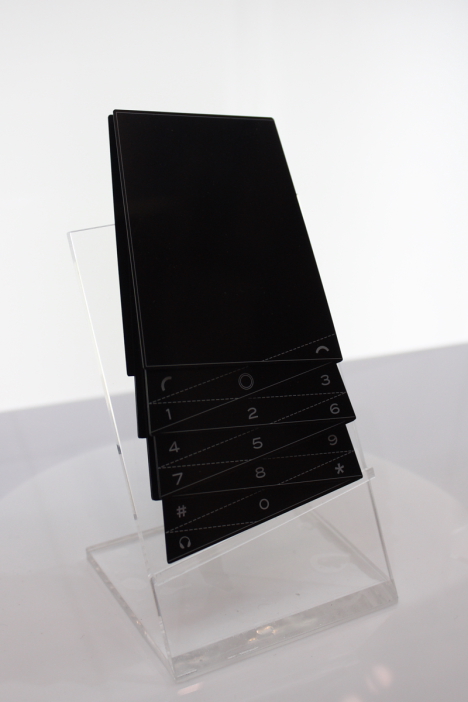
FOLD-A-PHONE: Fujitsu concept phone [+]
Designed by Hanna Sahlen and Sachiko Munakata, the FOLD-A-PHONE is a paper-thin handset that can be folded into a compact shape. The design was inspired by the "Miura-fold" origami method.
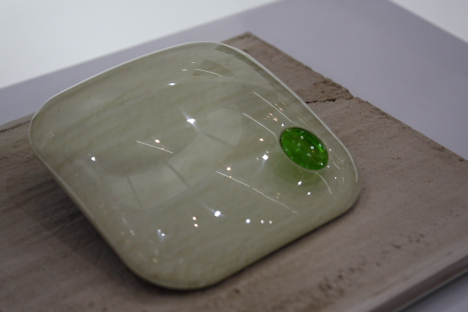
chamelephone: Fujitsu concept phone [+]
The chamelephone, designed by Hiroyuki Tabuchi, has a body that changes its appearance to match the texture of the surface it is placed on.
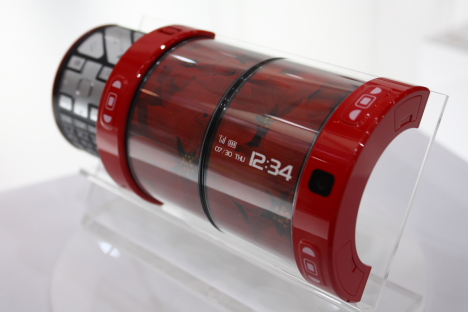
KAORA: Fujitsu concept phone [+]
Designed by Wataru Igarashi, the KAORA concept features a curved design that can assume various configurations to suit different uses.
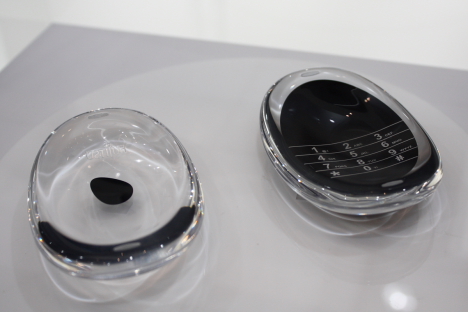
Amoeba Phone: Fujitsu concept phone [+]
The Amoeba Phone (designed by Kwak Yeon), whose entire surface is a touchscreen, has a concave shape designed to fit the user's face when they are talking on the phone.
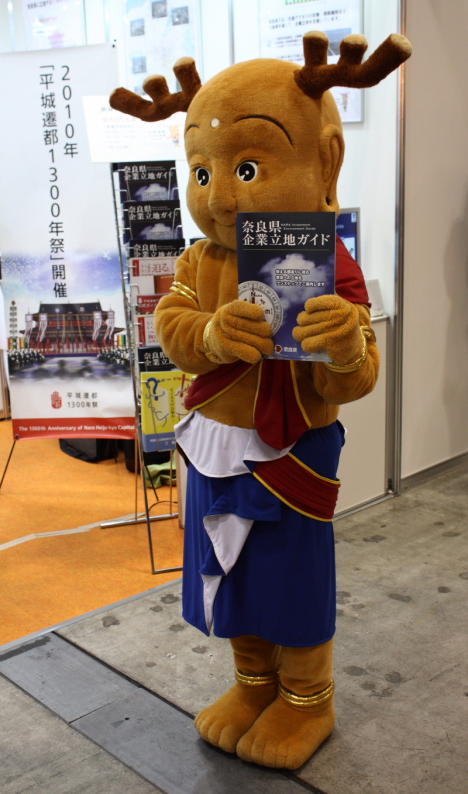
Sento-kun [+]
Sento-kun, the official mascot character for next year's Commemorative Events of the 1,300th Anniversary of the Nara-Heijokyo Capital, was on hand to promote investment in Nara prefecture.
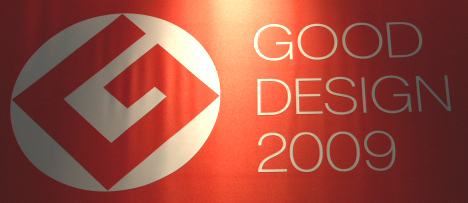
The annual Good Design Expo -- billed as one of the biggest design events in Asia -- showcases thousands of well-designed products under consideration for the year's Good Design Awards. Over 2,000 items ranging consumer electronics, automobiles and furniture to office equipment, building designs and sporting goods were exhibited at this year's event, which was held at Tokyo Big Sight this weekend (Aug 28-30). Here are just a few of the many eye-catching designs on display.
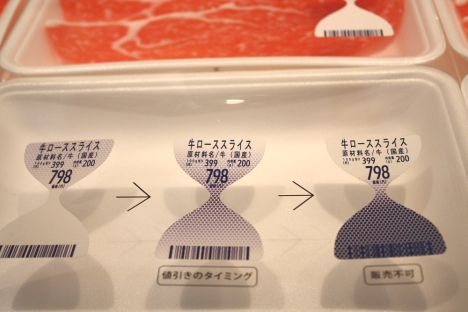
Freshness label [+]
One the most interesting items was this hourglass-shaped freshness label for meat products (designed by TO-GENKYO). The label contains special ink that changes color based on the amount of ammonia emitted by the meat (the older the meat, the more ammonia it releases).

Freshness label [+]
Like an hourglass, the bottom half of the label "fills up" as the meat ages. Consumers can judge the product's freshness at a glance.
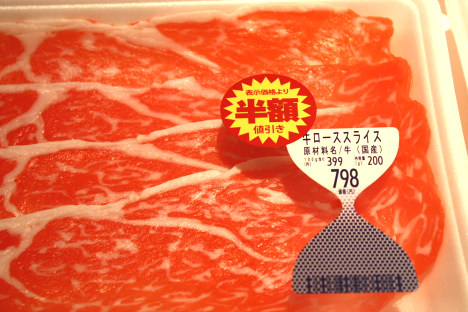
Freshness label (with 1/2 price tag) [+]
When the meat is no longer suitable for sale, the ink blocks the barcode at the bottom so that it cannot be scanned at the cash register.
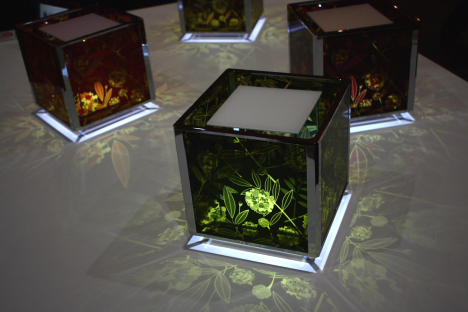
Hana-Akari [+]
These stylish Hana-Akari interior lamp shades by Sony are actually dye-sensitized solar cells that mimic photosynthesis by storing energy in a thin membrane. The shades collect sunlight during the day and power the lamp at night.
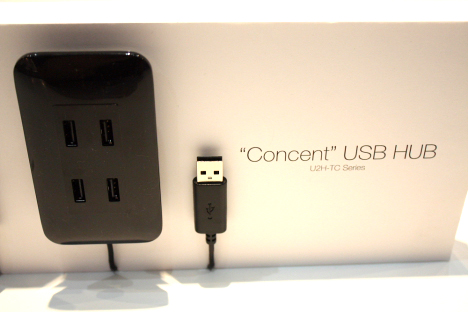
"Concent" USB hub that looks like wall outlet (by ELECOM) [+]
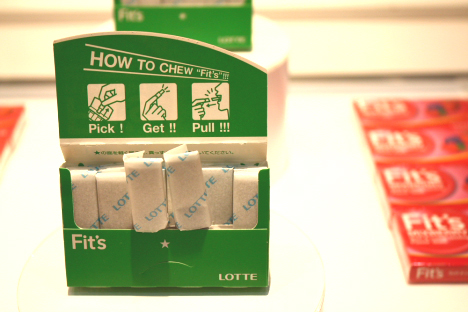
Lotte "Fit's" gum package [+]
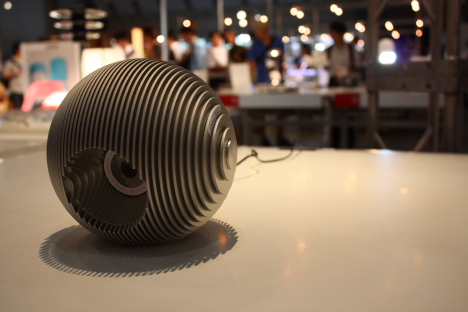
LED desk lamp [+]
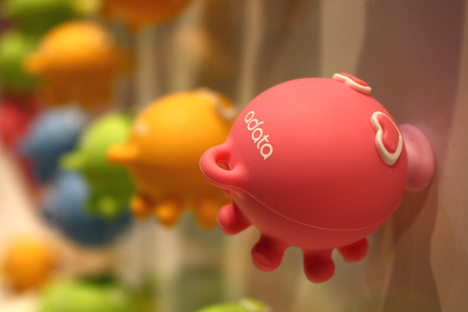
Kissing Octopus Couple USB flash drives [+]
The magnetized mouths of these Kissing Octopus Couple USB flash drives (by A-Data) allow them to function as magnetic stickers when not plugged into a computer. The USB connector tucks neatly inside the body.
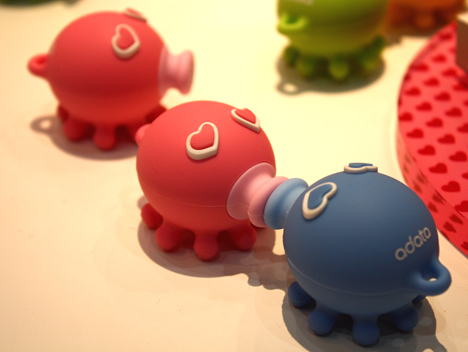
Kissing Octopus Couple USB flash drives [+]
When two are placed face to face, they lock together in a magnetic kiss (making them an ideal gift for Valentine's Day).
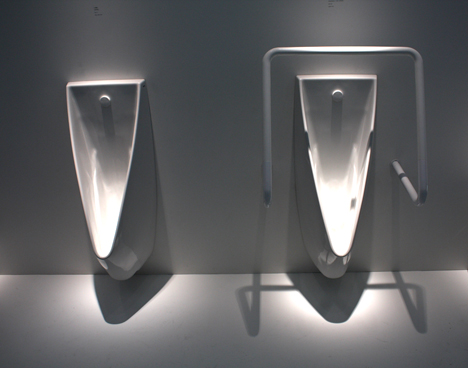
Restroom Item 01 urinals by Toto [+]
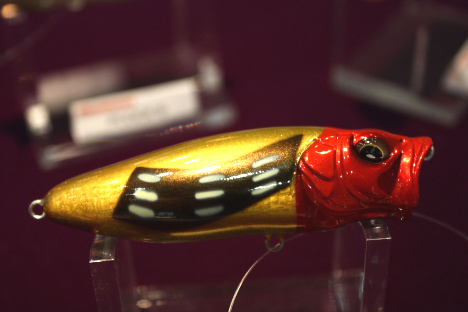
Balsa Max fishing lure [+]
The eye-catching Balsa Max fishing lures by Megabass are built using cutting-edge technology and natural materials.
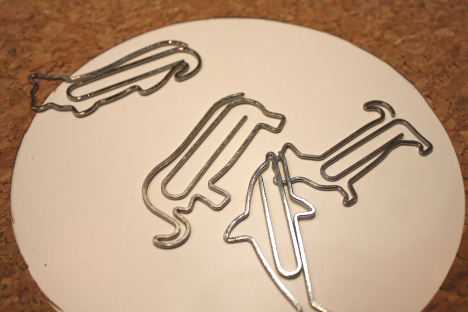
D-Clips (animal-shaped paperclips by Designphil) [+]
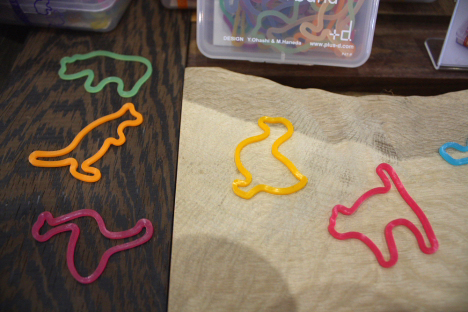
Animal rubber bands (by +d.) [+]
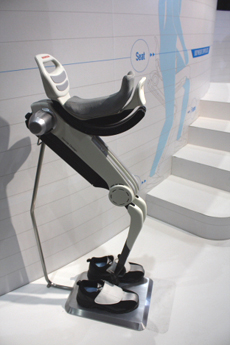
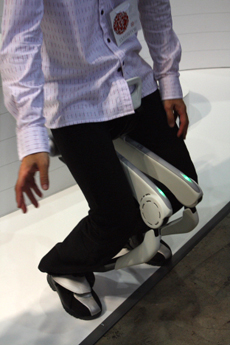
Honda Walking Assist Device [+] [+]
Honda's experimental Walking Assist Device helps support the wearer's body weight, reducing the load on the legs while walking, going up and down stairs, and crouching.
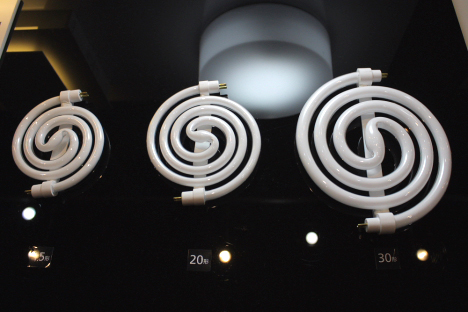
"Palook" spiral fluorescent bulbs by Panasonic [+]
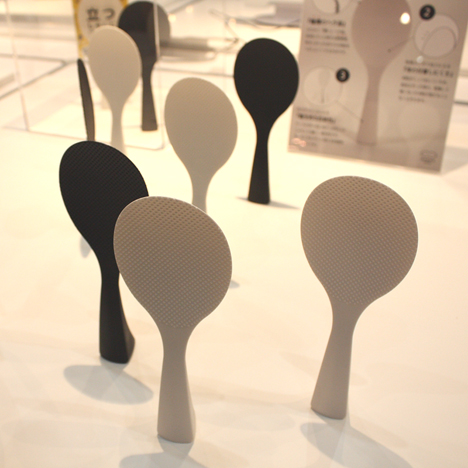
Rice spoons that stand on end [+]
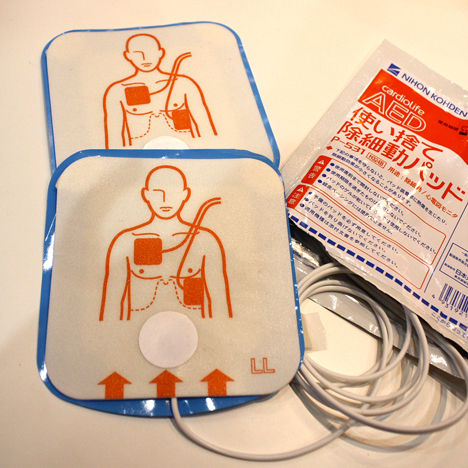
Disposable AED pads [+]
These disposable pads are designed for use with automated external defibrillators (AEDs) placed in public areas. The imprinted design shows where to attach the pads to the body -- helpful information for the first-time user.
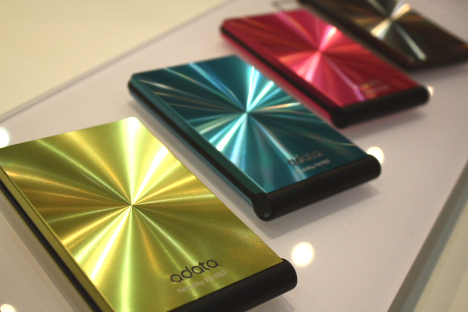
Candy-colored portable hard drives (by A-Data) [+]
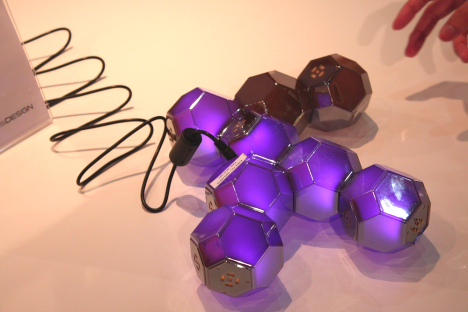
QLD-101 table lamp [+]
The QLD-101 table lamp (designed by Qisda Corporation) is a modular LED light fixture composed of crystal-like units that connect together with magnets. The polyhedral units can be easily configured into a variety of shapes, and the low-temperature LEDs prevent them from becoming hot to the touch.
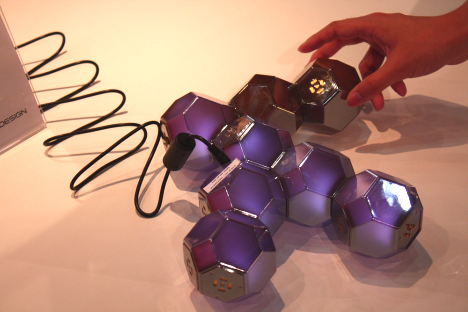
QLD-101 table lamp [+]
The interactive lamp, whose design was inspired by natural crystals, gently cycles through a spectrum of colors.
A 3-millimeter-thick digital booth babe is drawing double-takes in Tokyo.
+ Video
Spotted at the International Stationery and Office Products Fair, this eye-catching digital signage system consists of a 0.3-millimeter-thick high-luminance rear-projection film (Vikuiti Rear Projection Film developed by 3M) applied to a 3-millimeter-thick glass substrate cut into the shape of a woman. A rear projector beams video onto the film, whose microbead-arrayed surface produces a crisp, brilliant image viewable from any angle, even in brightly lit environments.
[Source: Robot Watch]
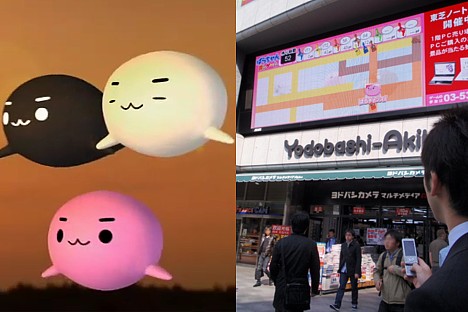
To promote its laptops and showcase digital signage technology capable of utilizing real-time data over the Internet, electronics giant Toshiba tested an interactive digital billboard in Tokyo last weekend that allowed YouTube users and pedestrians with mobile phones to play video games against each other. (Watch a video of the game action.)
Played on a digital billboard above the entrance to the Yodobashi Camera superstore in Akihabara, each game involved up to six players in a 90-second race to paint squares on a grid and hunt for Toshiba's cuddly Pala-Chan mascot. Mobile phone players followed the action on the billboard and used the number keys on their handsets to control the game's paint brushes, while YouTube players on computers used the arrow keys on their keyboards. (More video.)
To participate, pedestrians in Akihabara called a phone number displayed on the billboard before the start of each game, while YouTube users simply clicked a button on Toshiba's toshibanotepc channel (where the game is still available).
Winners who played via mobile phone in Akihabara received Pala-Chan parkas from Toshiba representatives stationed near the billboard site.
The company plans to use similar interactive billboard games to promote other products around town in the future.
[Source: Nikkei]
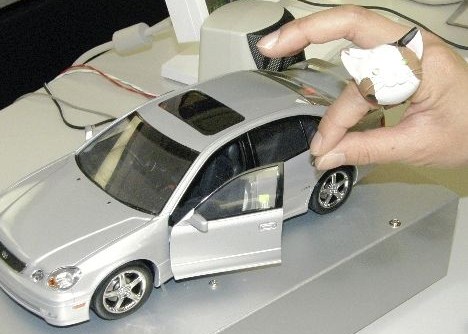
Major automotive supplier Denso Corporation has developed an electronic cat-faced ring that turns the human hand into a remote control and lets the wearer operate devices simply by pressing fingers together.
In a recent prototype demonstration of the ring, called "Yubi-nya" -- which is a play on the Japanese words for "ring" (yubiwa) and "meow" (nya) -- users were able to remotely open and close the doors of a model car by pressing their index finger and thumb together.
Yubi-nya, whose components are packed into the 2-centimeter thick likeness of a calico cat head, produces a weak electric current that is conducted through the wearer's index finger. When the tips of the finger and thumb are pressed together, the current travels through the flesh of the hand and loops back around to the ring. A sensor inside the ring then detects the returning current, and the corresponding remote control radio signal is sent to the appropriate device.
The developers suggest Yubi-nya's technology can be put to use in a variety of devices, including portable music players. A commuter on a crowded train, for example, could operate a music player while maintaining a firm grip on the subway strap.
Denso has not announced when a commercial version of Yubi-nya will become available, but researcher Saori Noda says, "We are working to make it smaller and less noticeable."
[Source: Yomiuri]
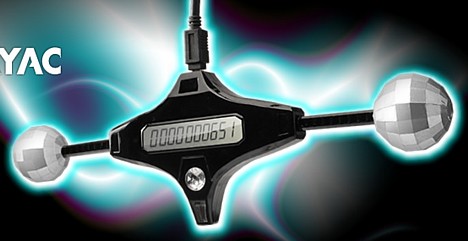
Maywa Denki, a Tokyo-based group of artists/musicians/engineers famous for inventing "nonsense machines," has teamed up with Kamakura-based IT solutions provider Kayac to develop a device that lets users visualize, monitor and control how they shake their restless legs.
The sleek black diamond-shaped contraption -- called "Yurex" (yure means "shake" in Japanese) -- straps to the thigh. A pair of silver disco ball-shaped sensors measure the leg's horizontal and vertical vibrations, and a 10-digit LCD counter displays the user's accumulated leg-shake tally.
When Yurex is connected to a computer's USB port, special software automatically downloads the data from the device and analyzes the user's leg-shaking habits and rhythm patterns. The software can also generate a personalized "creative beat pattern" based on leg-shake data obtained while the user is in a state of deep concentration. Then, whenever a boost of creative energy is needed, users can simply jiggle their knees in concert with this beat data to achieve higher brain power.
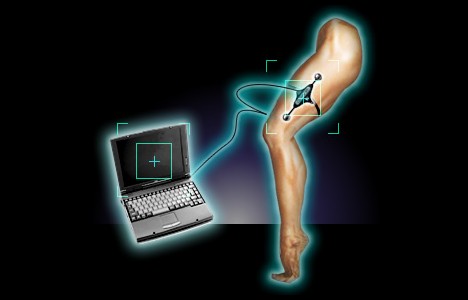
Yurex is the result of the so-called BBU Project, a collaboration between Maywa Denki and Kayac aimed at developing a marketable product that harnesses the energy of binbo-yusuri, or the constant and rapid up-and-down movement of restless legs often done unconsciously and/or out of habit.
Restless legs are highly frowned upon in Japan -- much more so than in other countries -- and the Japanese word binbo-yusuri, which literally translates as "poverty shake," has a very negative ring to it. Incidentally, there are several possible origins for the word. Some suggest it may derive from the fact that a person with a twitchy leg looks like a poor person shivering in the cold. Others link the word's origins to the tendency of loan sharks to tap their feet impatiently when collecting debts from the poor. Also, in Edo-period Japan, it is said that twitchy legs were a telltale sign that one was being stalked by Binbogami, the god of poverty.
Regardless of the word's origins, people tend to have a very negative view of binbo-yusuri, and it is often seen as a sign of poor intelligence and social grace.
The developers of Yurex, however, take a different view. They see binbo-yusuri as a sign of concentration and creativity -- a reflection of the brain at work. Moreover, they believe this "creative beat" can work in reverse. Shaking your leg in the proper way can increase concentration and creativity, they believe. Yurex is thus designed to work as a barometer of mental activity and as a tool to enhance brain power.

Yurex users are also eligible to participate in a social networking community (yurex.jp), whose members are referred to as "yusletes" (binbo-yusuri athletes). Users can display their binbo-yusuri data on the site and update it automatically each time the Yurex is connected to the computer. In addition to seeing how their binbo-yusuri counts rank in comparison to others, members can find the locations of other active "yusletes" through the site.
Yurex can also be used as a standalone device. With a 10-digit display that can tally up to 10 billion shakes, Yurex is suitable for use as a lifetime leg-shake monitor. For reference, a heavy shaker (like Maywa Denki president Nobumichi Tosa) who jiggles his leg an average of 400 times per minute for 8 hours per day will tally up nearly 5 billion shakes over a 70-year period.
Kayac plans to begin accepting orders for Yurex in January. The initial shipment, scheduled to hit shelves next spring, will be limited to 3,000 units. The price has yet to be announced.
[Link: Yurex]
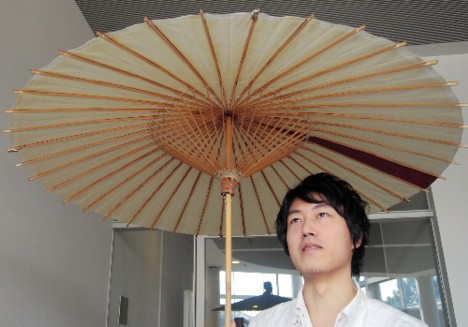
Oto-Shigure, a high-tech umbrella that functions as a personal audio speaker system, gives music lovers a reason to dance in the rain. Developed by Keio University and IT company Toa Engineering, Oto-Shigure looks like an ordinary traditional Japanese umbrella made of bamboo and oiled paper, but the entire object emits sound when connected to an iPod or other portable audio device, thanks to a tiny built-in amplifier and four small vibrating motors mounted along the periphery, which effectively turn the canopy into a large speaker cone. The umbrella produces a highly localized three-dimensional sound space audible only to the people underneath, so it can be used in public without disturbing the peace.
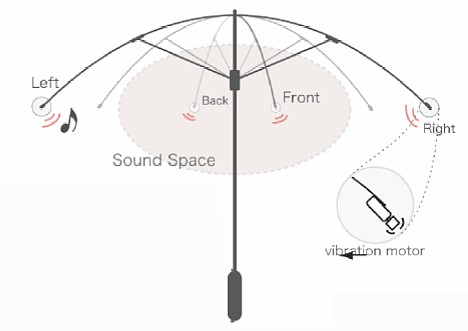
After filing a patent application for Oto-Shigure last September, inventors Yusuke Kamiyama and Mai Tanaka worked with Toa Engineering to complete a prototype earlier this year. They are now showing it off to the public to gauge user interest. If the response is positive, they plan to begin selling the audio umbrella next year for under 10,000 yen ($100).
[Source: Asahi]